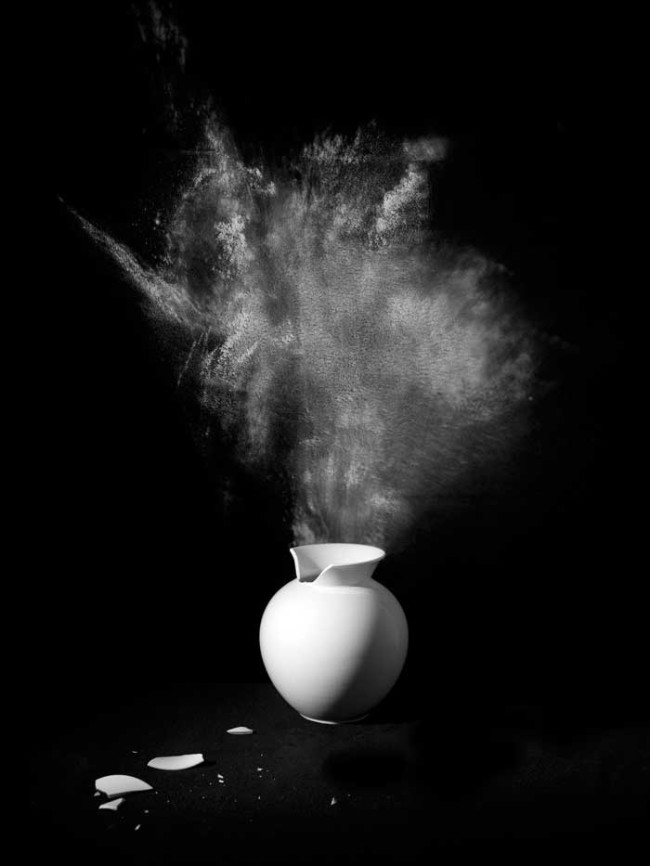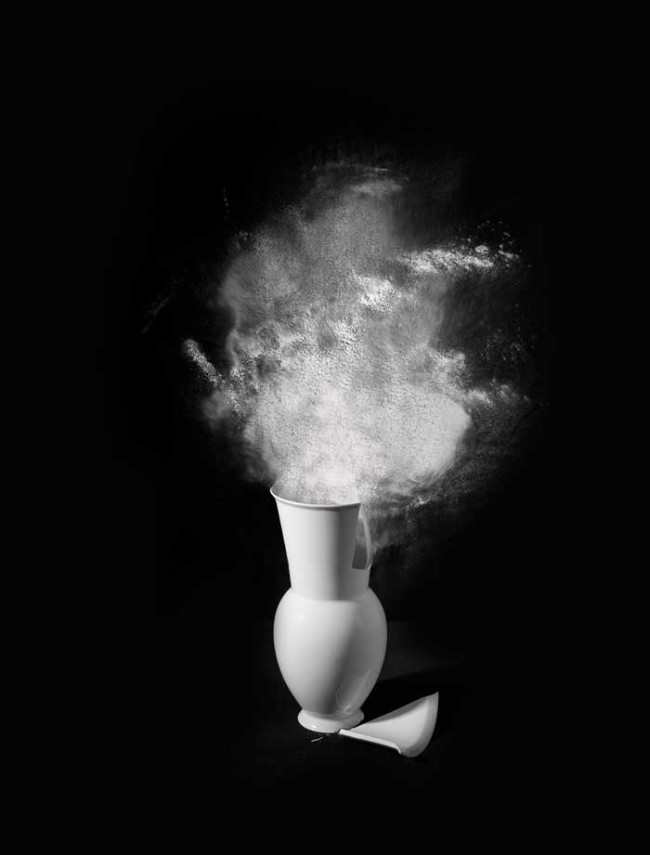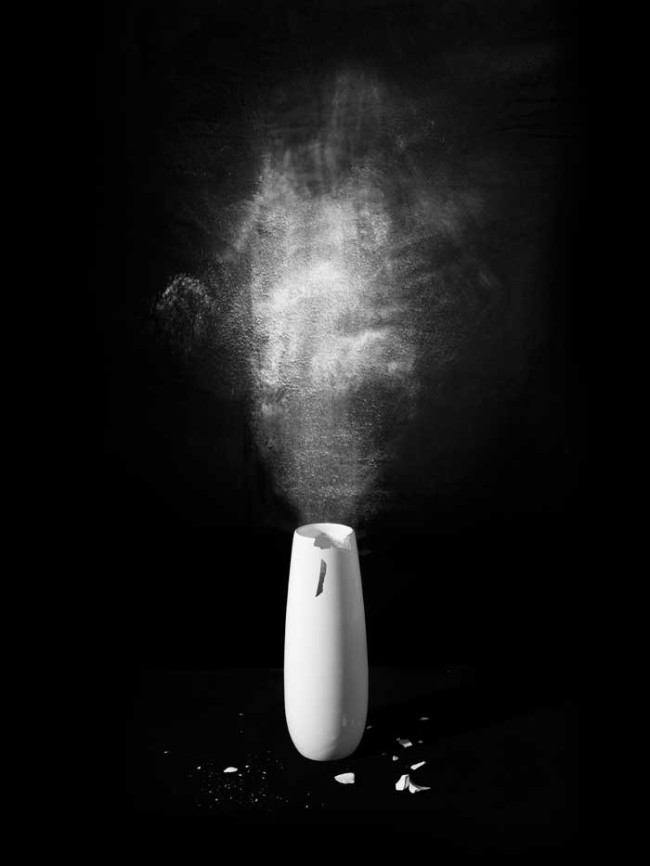NOWs: Gravity is just a Habit by Sophia Pompéry

Sophia Pompéry: Gravity is just a Habit
at
Opening 10 March 2017, 19 h
With Gravity is just a Habit, Sophia Pompéry presents her second solo exhibition with the gallery. Installation, photography and sculpture are employed by Pompéry to address the exhibition’s concept of “visual projections”, in which everyday objects such as maps and vases are transformed into parables. These impartial works enjoy various levels of interpretation and evoke associations of current political events such as migration or the destruction of cultural heritage. Consequently, Sophia Pompéry almost incidentally examines philosophical questions regarding the nature of spatial and temporal perception.
The joy of the physical experiment, including the illusion of common ways of seeing is what characterises Pompéry’s oeuvre. The exhibition title’s proposition, of gravity being a habit, targets precisely our unquestioning lethargy of accepting the familiar and given, instead of changing things.
One room in the gallery is devoted to the notion of borders and restrictions and has the title, Worlds. Here the visitor encounters a universe of school-like blackboard maps. Presented processionally, all these maps depict different parts of the world and are covered in blackboard paint. Measurements, political borders and cities disappear. The visitor is invited to draw their own version of a map – also an inner map – and thus a sponge and chalk become tools to create our own vision of the world, with the blackboards becoming a metaphor in which to comprehend space. Worlds questions the use of space, geopolitical power structures, ownership, migration and the state of the environment. If the visible becomes invisible and demarcations disappear, then all that remains is imagination. Worlds invites us to liberate our thoughts. Usually, these are caught in our everyday and it is seldom that we reflect upon our time and space and indeed who its custodians are.
A large work that covers an entire wall also presents us with questions of borders and visual projections – and suggests the infinity of outer space. The distance between stars is deceptive for the human eye and we often have difficulty in perceiving what these distances may be and instead see the sky as a sprinkled expanse. On maps, stars are also depicted across a single surface area. In the exhibition, this surface area can be viewed from both sides. The rear view of the Milky Way is infinity x 2.
Whereas Worlds invites us to use chalk and explore the volatility of fixed definitions, the photographic series Éloge du vide (praise emptiness) presents the reverse: a fleeting moment of exploding chalk, cemented in time, not unlike a still-life flower arrangement. Beyond this, it also questions our perception: the black and white photos of exploding vases, shrouded in a peculiar white smoke cloud, indeed have nothing in common with the usual, falling porcelain vessel, which has been affected by gravity. As if the explosion had set off a magical energy, we nonetheless underestimate these innocent, white vessels in our daily lives. Similarly, they arouse strong associations with the bombed and destroyed cultural assets in war zones, which serve to erase the cultural memory of a place.

